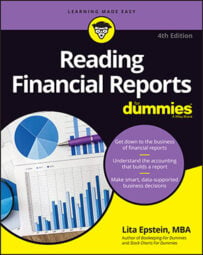Stricter than the current ratio is a test in financial reporting called the quick ratio or acid test ratio, which measures a company's ability to pay its bills without taking inventory into consideration. The calculation includes only cash on hand or cash already due from accounts receivable.
Unlike the current ratio, the quick ratio doesn't include money anticipated from the sale of inventory and the collection of money from those sales. To calculate this ratio, you use a two-step process: First, find the assets that a company can quickly turn into cash; then divide those quick assets by the current liabilities.
How to calculate the quick ratio
Here's the two-step process you use to find the quick ratio:
Determine the quick assets.
Quick assets = Cash + Accounts receivable + Short-term investments
Calculate the quick ratio.
Quick assets ÷ Current liabilities = Quick ratio or acid test ratio
Using information from Mattel's and Hasbro's balance sheets, here is the two-step process. Note: Only two figures were added to find the quick assets for Mattel and Hasbro because both companies combine cash and short-term investments or marketable securities on their balance sheets.
Mattel
Quick assets = $1,335,711,000 + $1,226,833,000 = $2,562,544,000
$2,562,544,000 (Quick assets) ÷$1,716,012 (Current liabilities) = 1.49 (Quick ratio)
So Mattel has $1.49 of quick assets for every $1 of current liabilities.
Hasbro
Quick assets = $849,701+ $1,029,959 = $1,879,660,000
$1,879,660,000 (Quick assets) ÷$960,435,000 (Current liabilities) = 1.96 (Quick ratio)
So Hasbro has $1.96 of quick assets for every $1 of current liabilities.
Hasbro is in a better position than Mattel based on the quick ratio, but both companies have a quick ratio of well over 1, so they should have no problem paying their bills.
What do the numbers mean?
A company is usually considered to be in a good position as long as its quick ratio is over 1. A quick ratio below 1 is a sign that the company will likely have to sell some short-term investments to pay bills or take on additional debt until it sells more of its inventory.
If you're looking at statements from companies in the retail sector, you're more likely to see a quick ratio under 1. Retail stores often have a lot more money tied up in inventory than other types of businesses. As long as the company you're evaluating is operating at or near the quick ratio of similar companies in the industry, you're probably not looking at a problem situation.
Remember that a quick ratio of less than 1 can be a sign of trouble ahead if the company isn't able to sell its inventory quickly. Other issues that can cause problems include slow-paying customers and accounts receivable that aren't collected when billed.

